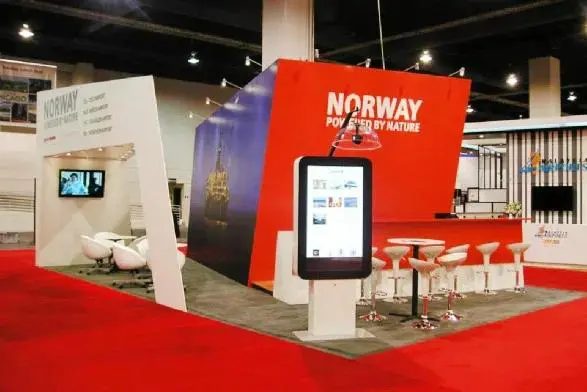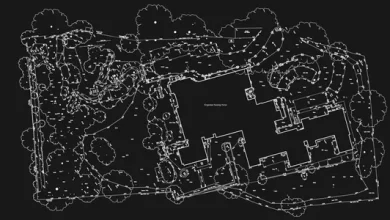Organizing a successful trade show presence requires more than booking a space and showing up with some brochures. Engaging professional trade show services and partnering with an experienced booth design specialist can transform your exhibit into a powerful lead-generation engine. Follow this step-by-step guide to ensure smooth execution from initial concept through post-show follow-up.
Define Objectives and Budget
Before reaching out to any vendors, clarify why you’re exhibiting:
Lead Generation: Are you aiming to collect business cards, scan badges, or book on-site demos?
Brand Awareness: Is your goal to increase impressions, social media mentions, or press coverage?
Product Launch: Are you unveiling a new solution that requires a dedicated demo area?
Establishing clear goals lets you allocate budget most effectively—whether that means investing in eye-catching booth graphics or hiring extra staff for product demos.
Assemble Your Team and Select a Booth Display Specialist
A focused project team should include:
Project Manager: Central point of contact for all internal and external communications.
Marketing Lead: Responsible for messaging, collateral, and pre-show promotion.
Logistics Coordinator: Handles shipping, drayage, and customs paperwork if exhibiting internationally.
On-site Reps: Sales or technical staff to engage attendees at the show.
Next, vet booth display specialists—companies that design, fabricate, and manage your exhibit structure. Look for providers who offer:
Custom Design Services: 3D renderings, brand-consistent graphics, and modular systems that adapt to different floor plans.
End-to-End Service: From permit applications and shipping coordination to on-site installation and dismantle.
Technology Integration: Interactive kiosks, AV setups, and lighting packages tailored to your needs.
Design, Branding, and Collateral
Work closely with your display specialist to finalize:
Booth Layout: Allocate zones for demos, private meetings, and storage.
Graphics and Signage: Ensure high-resolution imagery, concise messaging, and consistent color palettes.
Giveaways and Literature: Plan promotional items, brochures, and business cards—ordered well in advance to avoid rush fees.
Tip: Request physical or digital prototypes of critical elements (e.g., header signs) to confirm color accuracy and readability from a distance.
Coordinate Trade Show Services and Logistics
Trade show services encompass everything that keeps your booth running smoothly:
Electrical and Lighting: Confirm power requirements, outlet locations, and any special lighting fixtures.
Internet and AV: Arrange reliable Wi-Fi, wired network drops, and any audio-visual rentals (monitors, speakers, microphones).
Furniture and Flooring: Rent chairs, counters, carpeting, or raised platforms as needed.
Rigging and Rigging Permits: If you plan to suspend signage or lighting, secure floor plan approvals and rigging crews early.
Your logistics coordinator should create a detailed shipping schedule, tracking each crate from your warehouse to the show floor and back.
Pre-Show Rehearsals and Training
A successful booth activation hinges on well-prepared staff:
Product Demos: Conduct walk-throughs so every team member can deliver a concise, compelling presentation.
Lead Capture Systems: Train reps on badge scanners or digital forms to ensure data is recorded accurately.
Crisis Scenarios: Plan for common hiccups—late shipment, power failure, or last-minute design tweaks—and designate backup solutions.
On-Site Management
During show days, the project manager and logistics coordinator should:
Oversee Installation: Verify that the booth display specialist meets design specifications and handles any on-the-spot adjustments.
Monitor Supplies: Keep extra brochures, giveaway items, and technical cables on hand.
Track Metrics: Use your lead-capture system to monitor traffic flow, engagement rates, and downtime between demos.
Engage Visitors: Rotate staff to maintain energy levels and ensure every interested attendee receives attention.
Daily debriefs (even just 10 minutes) help catch small issues before they become big problems.
Teardown and Post-Show Follow-Up
Once the show ends:
Dismantle: Your booth display specialist should break down the exhibit safely, label all return shipments, and manage drayage to your designated warehouse or next event.
Debrief: Convene your team to review what worked well and what could improve—design elements, staffing, or logistics.
Lead Nurturing: Export captured leads, categorize them by priority, and assign follow-up tasks. A well-timed email campaign or phone call within a week of the show maximizes conversion potential.
ROI Analysis: Compare trade show costs—booth space, services, travel—to tangible outcomes like qualified meetings booked, proposals requested, or social media reach.
Conclusion
Treat your exhibition as a project and clearly define the various stages and responsibilities so that you can transform complex activities into repeatable and scalable processes. Professional exhibition services and experienced booth display experts ensure that every detail is handled professionally, from permit documents to final dismantling. A beautiful and attractive exhibition can attract potential customers, enhance brand awareness, and create measurable business value.




